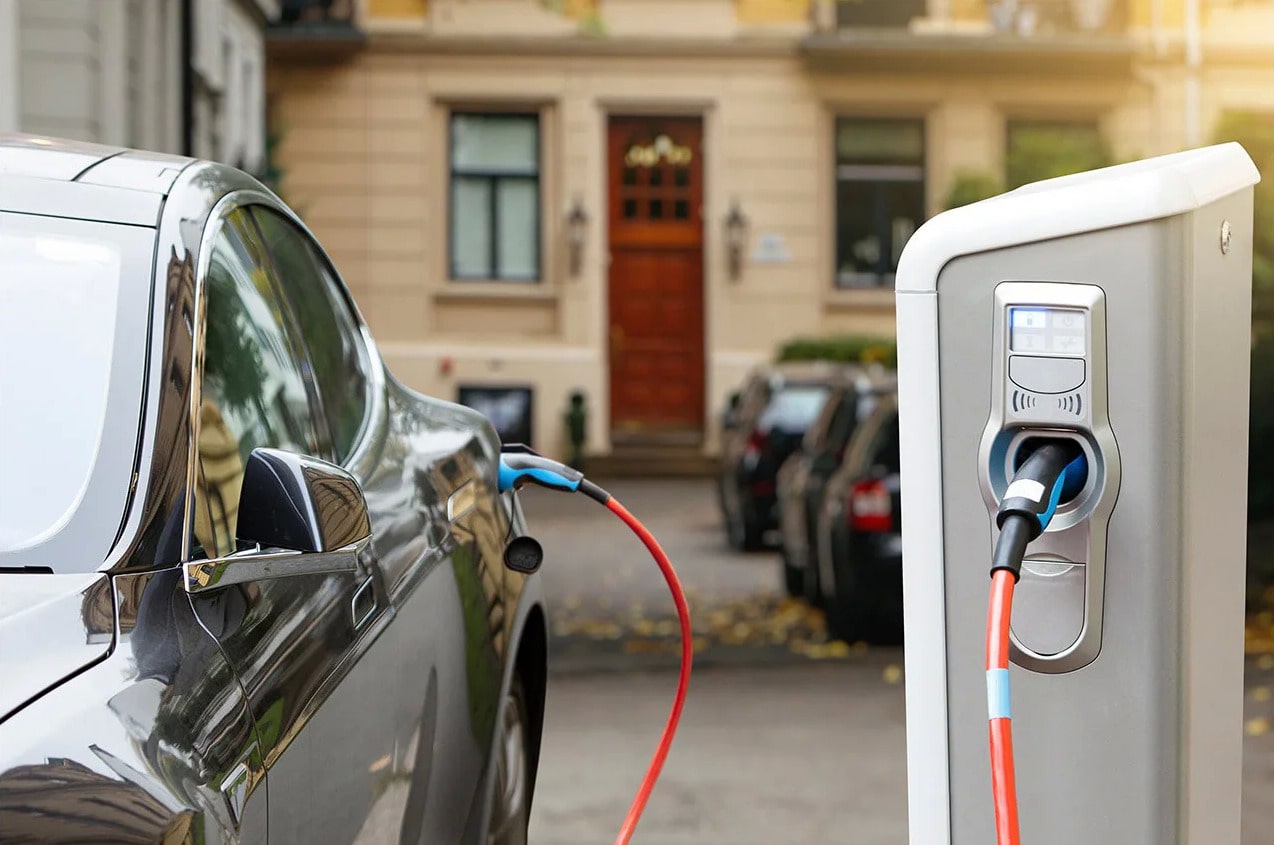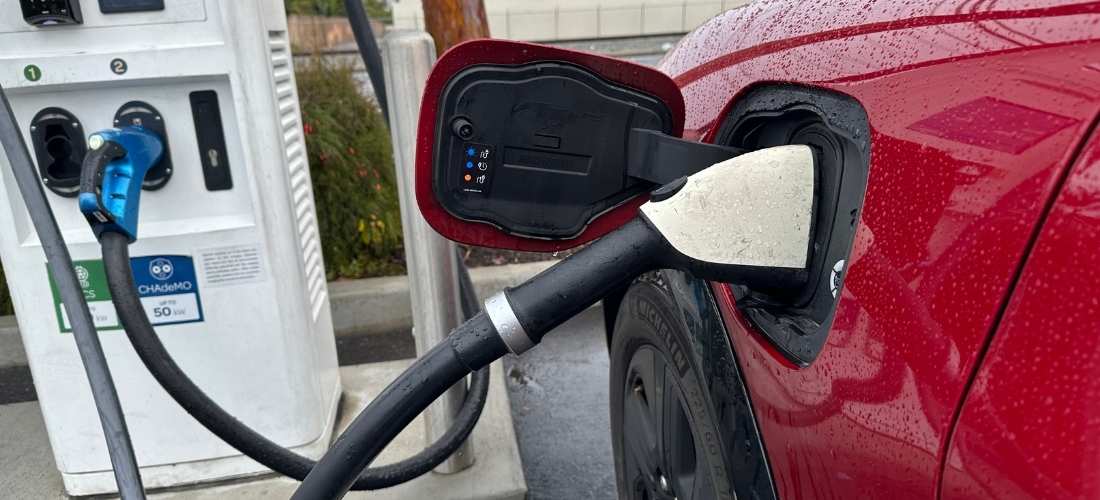As electric vehicles (EVs) become increasingly popular, it’s essential to understand the different types of EV chargers. From Level 1 chargers that use a standard 120-volt outlet to DC Fast chargers that can provide a full charge in less than an hour, there is a variety of charging options to fit your needs. In this blog post, we’ll explore the different types of EV chargers and their pros and cons.
Level 1 Chargers
Level 1 chargers are the most basic type of electric car charger available. They use a standard 120-volt outlet, the same as you would find in any home, to charge your electric car’s battery. Because of this, sometimes people call them “trickle chargers” because they provide a slow and steady charge.
Level 1 chargers typically charge a vehicle’s battery longer than higher-level chargers. A level 1 charger, such as the Nissan Leaf, may take around 8 to 12 hours to charge a typical electric car fully. However, charging time varies depending on the car’s battery capacity and its remaining charge level. Level 1 chargers suit electric vehicles with small batteries or a slower daily driving range.
One of the main advantages of Level 1 chargers is their simplicity. They are easy to use and do not require any special installation. You simply plug them into a standard outlet and then plug the charging cable into your car. They are also relatively inexpensive compared to other charging options.
Pros and cons of Level 1 chargers
Like any technology, Level 1 chargers have both advantages and disadvantages. Here are some of the pros and cons of using a Level 1 charger:
Pros:
Simple and easy to use.
Inexpensive compared to other charging options.
No special installation required.
Can be used with any standard outlet.
Cons:
Slow charging time.
Limited battery capacity.
May not be suitable for electric cars with large batteries or longer driving ranges.
May not be compatible with all electric cars.
Examples of Level 1 chargers
There are many different Level 1 chargers available on the market. Here are some popular models:
1. Lectron Level 1 EV Charger:
Lectron’s Level 1 EV charger has a 12-amp charging capability. This charger is perfect for use at home or on the go. You can even keep it in your trunk and plug it in whenever you find an outlet, making it a versatile and portable option.
2. AeroVironment TurboCord Level 1 EV Charger:
The AeroVironment TurboCord Level 1 EV Charger is another portable charger plugs into a standard 120-volt outlet. It delivers up to 12 amps of charging power and can charge an electric vehicle up to three times faster than a standard Level 1 charger.
3. Bosch Level 1 EV Charger:
The Bosch Level 1 EV Charger is a compact, lightweight charger that plugs into a standard 120-volt outlet. It delivers up to 12 amps of charging power and can fully charge most electric vehicles overnight.
Level 2 Chargers
Level 2 chargers can provide faster charging than Level 1 chargers. They are usually installed in residential or commercial locations and are capable of delivering charging speeds up to 25 miles of range per hour. These chargers require a 240-volt outlet, similar to the type of outlet used for large appliances like electric dryers.
One of the primary benefits of Level 2 chargers is their ability to charge an EV more quickly than Level 1 chargers. This makes them a better option for EV drivers who need to recharge their vehicles more frequently or have a longer daily commute. Additionally, Level 2 chargers often have additional features, such as WiFi connectivity and smartphone apps, which can provide more information about the charging process.
Pros and cons of Level 2 chargers
Here are some pros and cons of Level 2 chargers:
Pros:
Faster charging times: Level 2 chargers can charge an EV up to five times faster than Level 1 chargers.
More efficient: Level 2 chargers are more efficient than Level 1 chargers, meaning the charging process can waste less energy.
Better for long-distance travel: Level 2 chargers are more suitable for long-distance travel because they charge faster.
Available in various power outputs: Level 2 chargers are available in different power outputs, ranging from 16 amps to 80 amps, making them suitable for multiple types of electric vehicles.
Cons:
Installation costs: Level 2 chargers require a 240-volt power source, which may require additional electric work and may increase installation costs.
Not suitable for all electric vehicles: Some electric cars may not be compatible with Level 2 chargers because of their charging capabilities.
Availability: Level 2 chargers may not be as comprehensive as Level 1 chargers, especially in rural areas.
Examples of Level 2 chargers
1. MIDA Cable Group:
With its leading EV charger series, Mida has made significant strides in the global market. The series includes multiple models tailored to meet the diverse needs and charging environments of EV owners. For instance, the BASIC and APP models are ideal for home use. The RFID (billing) and OCPP models are available for commercial purposes such as paid-to-park.
2.ChargePoint Home Flex:
This smart, WiFi-enabled Level 2 charger can deliver up to 50 amps of power and charge an EV up to six times faster than a standard Level 1 charger. It has a sleek, compact design and can be installed indoors and outdoors.
3.JuiceBox Pro 40:
This high-powered Level 2 charger can deliver up to 40 amps of power and charge an EV in as little as 2-3 hours. It is WiFi-enabled and can be controlled via a smartphone app, making it easy to track charging progress and adjust settings remotely.
DC Fast Chargers
Dc Fast chargers, or Level 3 chargers, are the fastest charging option for electric vehicles. These chargers provide high levels of power to charge the battery of an EV quickly. DC Fast chargers are typically found along highways or in public areas and can quickly charge an EV. Unlike Level 1 and Level 2 chargers, which use AC power, DC Fast chargers use DC power to charge the battery directly.
This means the DC Fast charging process is more efficient and faster than Level 1 and Level 2 chargers. The power output of DC Fast chargers varies, but they can typically provide a charge of 60-80 miles of range in just 20-30 minutes. Some newer DC Fast chargers can provide up to 350kW of power, charging an EV to 80% in as little as 15-20 minutes.
Pros and cons of DC Fast chargers
While there are several benefits to using DC chargers, there are also some drawbacks to consider:
Pros:
Fastest charging option for EVs.
Convenient for long-distance travel.
Some newer DC Fast chargers provide high power output, significantly reducing charging time.
Cons:
Expensive to install and maintain.
Not as widely available as Level 1 and Level 2 chargers.
Some older EVs may not be compatible with DC Fast chargers.
Charging at high power levels can cause battery degradation over time.
Examples of DC Fast chargers
There are several different types of DC Fast chargers available on the market. Here are some examples:
1. Tesla Supercharger:
This is a DC fast charger designed specifically for Tesla electric vehicles. It can charge a Model S, Model X, or Model 3 to 80% in about 30 minutes, providing up to 170 miles of range. The Supercharger network is available around the world.
2. EVgo Fast Charger :
This DC fast charger is designed for commercial and public locations and can charge most electric vehicles in under 30 minutes. It supports CHAdeMO and CCS charging standards and provides up to 100 kW of power.
3. ABB Terra DC Fast Charger:
This charger is designed for public and private use and supports CHAdeMO and CCS charging standards. It provides up to 50 kW of power and can charge most electric vehicles in under an hour.
Wireless Chargers
Wireless chargers, or inductive chargers, are a convenient way to charge your electric vehicle without the hassle of cords. Wireless chargers use a magnetic field to transfer energy between a charging pad and the EV’s battery. The charging pad is typically installed in a garage or parking spot, while the EV has a receiver coil mounted on the underside. When the two are in close proximity, the magnetic field induces an electric current in the receiver coil, which charges the battery.
Pros and Cons of Wireless Chargers
Like any technology, wireless chargers have their advantages and disadvantages. Here are some of the pros and cons of using a wireless charger for your EV:
Pros:
No cords required, which can be more convenient and aesthetically pleasing.
Easy to use, with no need to physically plug in the vehicle.
Good for home charging stations, where the car is parked in the same spot each night.
Cons:
Less efficient than other types of chargers, which can result in longer charging times.
Not as widely available as other types of chargers, so finding a wireless charger may be more difficult.
More expensive than other types of chargers due to the added cost of the charging pad and receiver coil.
Examples of Wireless Chargers
If you’re interested in using a wireless charger for your EV, here are a few examples to consider:
1. Evatran Plugless L2 Wireless Charger:
This wireless charger is compatible with most EV models and has a charging rate of 7.2 kW.
2. HEVO Wireless Charging System:
This wireless charger is designed for commercial fleets and can provide up to 90 kW of power to charge multiple vehicles simultaneously.
3. WiTricity Wireless Charging System:
This wireless charger uses resonant magnetic coupling technology and can provide up to 11 kW of power. It’s compatible with various EV models, including Tesla, Audi, and BMW.
Conclusion
In summary, different types of EV chargers are available in the market. Level 1 chargers are the most basic and slowest, while Level 2 chargers are more common and provide faster charging times. DC Fast chargers are the fastest but also the most expensive. Wireless chargers are also available but are less efficient and take longer to charge an EV.
The future of EV charging is promising, with technological advancements leading to faster and more efficient charging options. Governments and private companies are also investing heavily in building more public charging stations to make EVs more accessible.
As more people transition to electric vehicles, choosing the right type of charger that fits your needs is essential. A Level 1 or Level 2 charger may be sufficient if you have a shorter daily commute. However, DC Fast chargers may be necessary if you frequently travel long distances. Investing in a home charging station can also be a cost-effective option. It’s essential to research and compare different chargers and installation costs before making a decision.
Overall, with the well-established charging infrastructure, electric vehicles have the potential to be a sustainable and convenient transportation option for the future.
Post time: Nov-09-2023

 Portable EV Charger
Portable EV Charger Home EV Wallbox
Home EV Wallbox DC Charger Station
DC Charger Station EV Charging Module
EV Charging Module NACS&CCS1&CCS2
NACS&CCS1&CCS2 EV Accessories
EV Accessories


